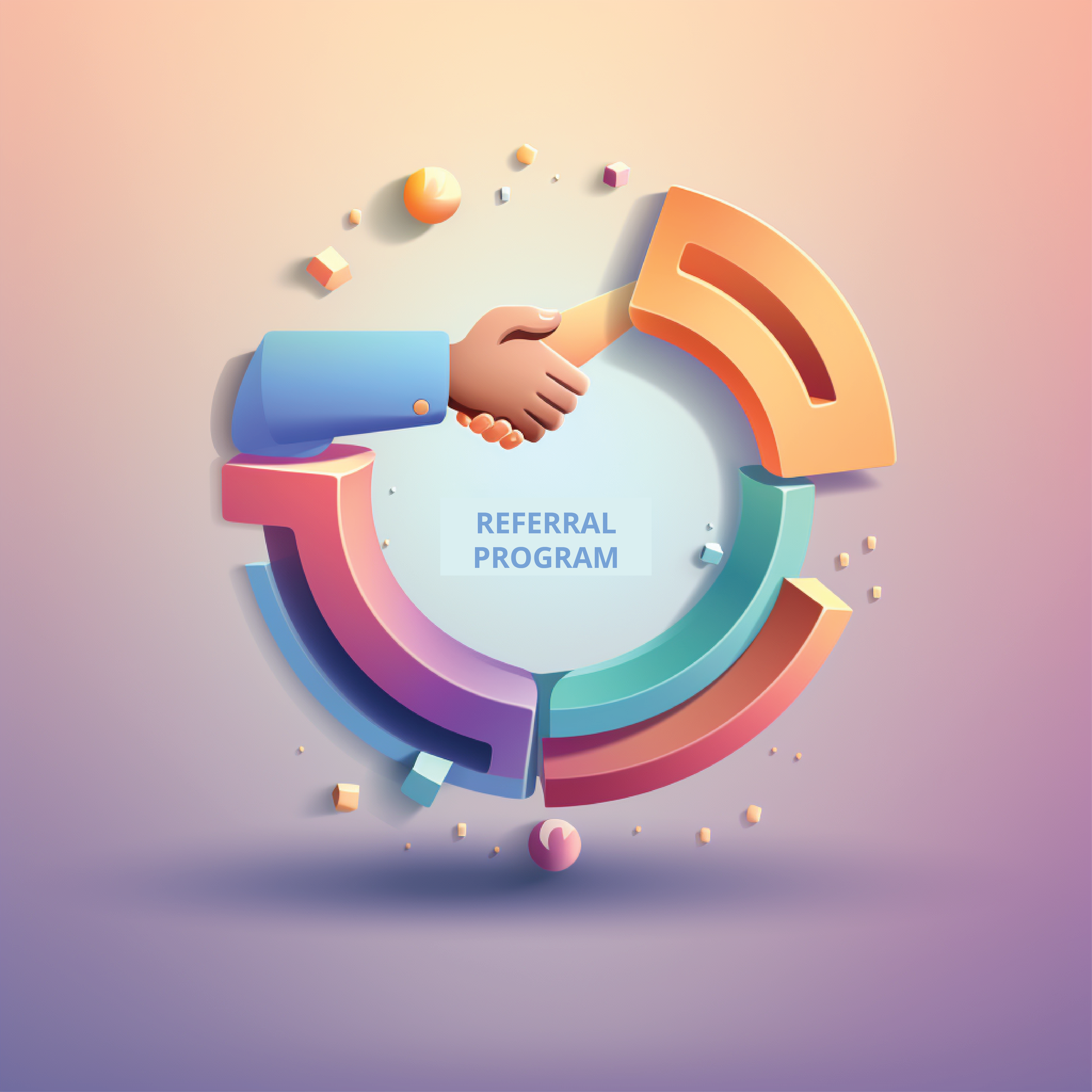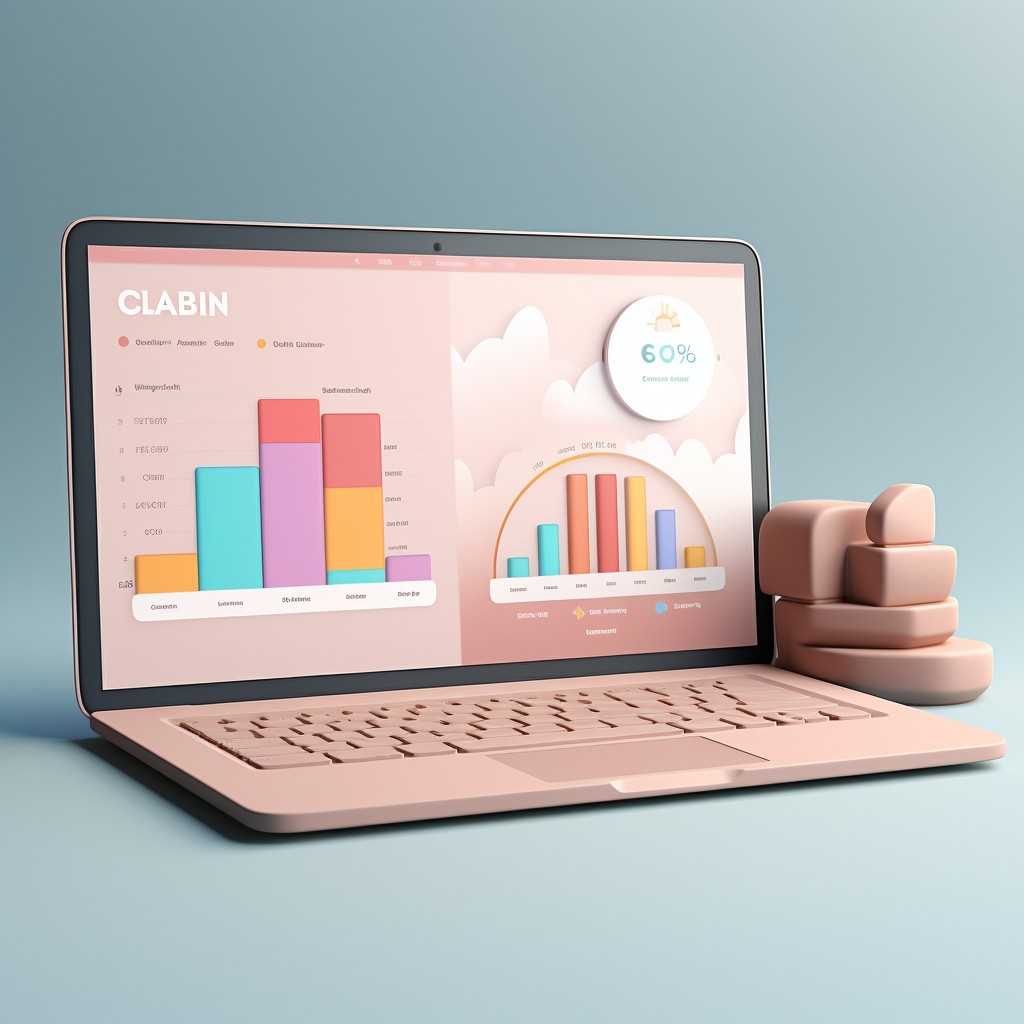
Why B2B SaaS Platforms Need Merchant Health Scores
B2B SaaS platforms are turning to Merchant Health Scores to gauge the financial vitality of their customer businesses. Learn what a Merchant Health Score is, how it’s calculated, and why it’s crucial for embedded lending, risk reduction, customer retention, and growth.
What is a Merchant Health Score? (Definition & Calculation)
Merchant Health Score is a data-driven metric that reflects a merchant’s overall business health and risk level on a B2B platform. In simple terms, it’s like a credit score for businesses using your SaaS platform – but far more comprehensive. Unlike a traditional credit score that relies mostly on credit bureau data, a Merchant Health Score taps into rich real-time data from the merchant’s activities on your platform and other financial indicators.
How It’s Calculated: Merchant Health Scores are typically calculated by analyzing a range of financial and operational metrics and combining them into a single score or grade. Advanced platforms use algorithms to weight these factors and predict future performance. Key inputs often include:
-
Revenue & Sales Trends: The merchant’s sales volume and growth over time. Steady or growing revenue indicates a healthier business, whereas declining or highly volatile sales may signal risk.
-
Cash Flow & Liquidity: Patterns in cash inflows and outflows. Consistent positive cash flow and adequate reserves suggest the merchant can meet obligations. Early warnings like sudden dips in recurring revenue or delayed payments can flag potential liquidity issues.
-
Expense and Profit Margins: Analyzing expense ratios and profit margins provides insight into sustainability. Thin margins or rising expenses might erode a merchant’s capacity to repay loans or invest in growth.
-
Customer Engagement & Churn Indicators: How the merchant’s customers behave (for example, in an e-commerce context) – repeat purchase rates, refund requests, or online reviews. High dispute rates or dropping customer engagement could reflect underlying business problems help.shopify.com.
-
Operational History: Time on the platform and consistency. A longer, stable track record on your SaaS (e.g. many months of usage) with good standing is a positive signal help.shopify.com. Newer merchants or those with compliance issues (violations of terms of service) might score lower.
All these factors are fed into a scoring model to produce an overall health score for each merchant. The score might be a numerical value (e.g. 1 to 100) or a category (e.g. “Low, Medium, High” risk). The exact formula can vary, but the goal is the same: quantify the merchant’s financial health and creditworthiness. Modern systems like Richie AI’s Merchant Health Score offering even employ machine learning on large datasets to improve predictive accuracy, learning patterns that precede growth or default risk (in other words, spotting trouble before it hits). This technical approach means the scoring model isn’t static – it continuously adjusts as new data comes in, ensuring a current and nuanced view of each merchant’s health.
Why B2B SaaS Platforms Should Care About Merchant Health Scores
In the fast-paced world of B2B SaaS, knowledge is power. A Merchant Health Score provides actionable insight into each business customer on your platform. Here’s why it matters, especially for platforms venturing into embedded lending:
-
Embedded Lending is Rising: More SaaS companies are integrating lending or financing offers into their platforms (think of eCommerce platforms offering working capital loans, or payment processors advancing cash to merchants). In fact, embedded finance is booming – the global embedded finance market was valued around $58 billion in 2022 and is projected to reach $730+ billion by 2032 begini.co. For SaaS platforms, offering embedded lending can unlock new revenue streams and add value for customers. But it also means taking on credit risk.
-
Traditional Credit Checks Fall Short: Many small businesses on SaaS platforms are under-served by traditional credit scoring. They might be relatively new, or have thin credit files, making standard credit scores unreliable. Relying solely on external credit data could cause you to turn away good merchants or lend to risky ones unknowingly. A Merchant Health Score fills this gap by using the rich data already available on your platform – transactional data, usage patterns, and more – to assess risk more holistically.
-
Real-Time Risk Monitoring: Unlike one-off credit checks, Merchant Health Scores can be updated continuously. B2B SaaS platforms thrive on agility, and having a real-time pulse on merchant health means you can react quickly to changes. For instance, if a previously healthy merchant shows a sudden drop in sales or an increase in refund claims, the health score would reflect that downturn immediately, alerting you to revisit their loan offers or account status. This proactive stance is crucial in embedded lending, where conditions can change month to month.
-
Benchmarking and Segmentation: A health score allows you to segment your merchant base. You can identify which merchants are top-tier (strong growth, low risk), which are middling, and which are high risk. This segmentation helps tailor your approach – from marketing to support. For example, you might fast-track loan offers or premium features to healthy, growing merchants, while providing educational resources or tighter monitoring for those with lower scores.
In short, Merchant Health Scores give SaaS platforms a strategic advantage: they turn your data into insight. By caring about these scores, platforms especially in the U.S. B2B market can underwrite loans more confidently, build trust with customers, and prioritize efforts where they’ll matter most. Below, we explore how exactly Merchant Health Scores translate into reduced risk, better retention, and faster growth.
Reducing Lending Risk with Data-Driven Health Scores
One of the most compelling reasons to use Merchant Health Scores is risk reduction, particularly for platforms offering loans or cash advances. Embedded lenders need to manage credit risk just like banks do – but with far less historical data and often without a traditional underwriting team. A robust health scoring system becomes your automated risk analyst:
-
Informed Underwriting: Instead of lending based on gut feeling or limited info, you make decisions backed by hard data. A high Merchant Health Score suggests the merchant is financially stable and likely to repay; a low score warns of elevated default risk. Platforms like Stripe Capital have shown the power of data-driven underwriting. Stripe’s lending arm processed about $2.4 billion in business loans in 2022 by foregoing traditional credit checks and instead leveraging each business’s performance data on the platform newfrontierfunding.com. By analyzing transaction history and revenue patterns algorithmically, they tailor loan offers to what the merchant can handle. The result is more accurate risk assessment and fewer surprises.
-
Early Warning System: Merchant Health Scores enable proactive risk management. By continuously monitoring a merchant’s metrics, the score can flag early warning signs that a merchant is headed for trouble. For example, if sales decline for two consecutive months and cash reserves dwindle, the score will drop. Lenders on the platform can respond by adjusting credit limits, altering repayment schedules, or pausing additional funding before a missed payment happens. This beats reacting after a default – it’s the difference between steering away from an iceberg versus hitting it head-on.
-
Fraud and Compliance Checks: Health scoring can also incorporate signals of fraud or non-compliance (indirectly reducing risk). Unusual spikes in activity, lots of chargebacks, or other anomalies could trigger a review. While the Merchant Health Score is primarily about financial health, a sudden change in score might catch things that a manual review misses. Essentially, it acts as a safety net, scanning 24/7 for risk factors.
-
Case in Point – Shopify Capital: Shopify’s embedded lending service evaluates merchants based on multiple health factors automatically, including sales trends, customer interactions, and even adherence to terms of service help.shopify.com. The goal is to ensure they only extend funding to merchants who can handle it. If a merchant’s health indicators slip (say, rising chargebacks or falling sales), they might stop offering new loans until things improve. This dynamic approach helps keep default rates low while still enabling thousands of businesses to access funds.
-
Lower Default Rates: All of the above contributes to fewer bad loans. When you lend to the right people at the right time, the likelihood of default plummets. Platforms using rich data for underwriting have seen significantly better loan performance. Intuit’s QuickBooks Capital, for example, uses 26 billion data points from QuickBooks files and machine learning models to predict a small business’s ability to repay techcrunch.com. This lets them confidently lend to younger businesses that banks would reject, all while expecting low default rates due to superior risk modeling. In practice, a well-calibrated Merchant Health Score means you can expand lending safely, because you understand each merchant’s risk profile intimately.
For any B2B SaaS platform, reducing lending risk is not just about avoiding losses – it’s about enabling a sustainable, scalable lending program. Merchant Health Scores give you the lens to do exactly that: lend boldly but wisely, supported by data. As a result, you can offer financing to more customers (even those without long credit histories) with confidence that your risk is under control.
Improving Customer Retention and Trust
Every SaaS business knows that customer retention is king. If your merchants don’t succeed, they might leave – or fail to repay loans, in the worst case. Merchant Health Scores can significantly boost retention by allowing you to support and engage your customers in a smarter way:
-
Proactive Support for At-Risk Merchants: A declining health score is like a cry for help. It can alert your customer success team that a merchant is struggling. Instead of waiting for the merchant to churn (or default on a loan), your team can reach out and offer solutions. For instance, if the data shows slipping sales and cash flow, perhaps you offer consultation on marketing or temporarily flexible payment terms on their subscription. This kind of timely, tailored support can save the relationship. It shows the merchant that you understand their challenges and are invested in their success.
-
Strengthening Relationships through Insight: Sharing aspects of the health score with the merchant (or at least the positive insights) can also build trust. Some platforms provide dashboards to merchants showing key metrics of their business health. By being transparent and helpful – “Here’s how your business is doing, and here are some resources to improve” – you position yourself as a partner in the merchant’s growth, not just a service provider. Richie AI’s approach to merchant analytics, for example, emphasizes providing lenders and platforms with ongoing insights, which can be communicated to merchants in a constructive way. When merchants feel cared for, they are more likely to stay loyal and even consolidate more of their business with your platform.
-
Tailored Product Recommendations: A Merchant Health Score isn’t only about lending. It can inform what other services or product features a merchant might need. For example, a very healthy merchant (high score) might be a good candidate for premium features, higher subscription tiers, or new add-ons – you can reach out with an upsell that genuinely matches their capacity and ambition. Conversely, a merchant showing early signs of struggle might benefit from educational content (e.g. blog posts on improving cash flow, invitations to webinars, etc.) rather than upsells. This personalized approach, driven by the health score segments, makes your outreach more relevant. Relevant interactions = happier customers = better retention.
-
Increased Engagement via Embedded Finance: When done right, offering financing to your merchants can actually improve retention. Why? Because you’re providing them value exactly when they need it (extra capital during a growth phase or a slow season). But the key is to offer it to the right merchants. Health scores ensure you extend offers to those who can use them successfully. Those merchants then grow faster and stick with your platform to continue receiving benefits. It creates a virtuous cycle of growth and loyalty. Case Study – Toast: Toast, a restaurant SaaS platform, launched an embedded lending program (Toast Capital) and found that understanding each restaurant’s health was essential before offering loans. They used their POS data to figure out “what makes a good, strong, healthy restaurant” and only then extended loan offers wbur.org. The result is that restaurants who take loans can thrive (because they were good candidates to begin with), and Toast deepens its relationship with these customers. Restaurants are likely to remain loyal to Toast for the long haul, since Toast provided capital when they needed it – a powerful retention driver.
-
Trust and Brand Reputation: Lastly, using Merchant Health Scores to guide your customer interactions enhances your reputation. It shows that your platform is responsible – you’re not just throwing loans at anyone or ignoring customers until they fail. You’re actively managing risk and caring for customer wellbeing. In the U.S. market, where word-of-mouth and reviews matter, being known as a platform that helps merchants succeed will differentiate you. Over time, this strengthens your brand and attracts more businesses to join (knowing that they won’t be left high-and-dry if times get tough).
In summary, Merchant Health Scores empower you to be proactive rather than reactive with your customers. By catching issues early and personalizing your engagement, you can keep merchants on the platform longer and in better financial shape. They win, you win.
Driving Growth and Revenue
Beyond risk and retention, Merchant Health Scores can be a catalyst for growth – both for your customers and for your own bottom line. Here’s how harnessing these scores can drive growth:
-
Identify Growth Opportunities: Your healthiest merchants are often your best opportunities for expansion. A consistently high health score might indicate a business that’s ready to scale – perhaps they could use a larger loan to expand inventory, or maybe they have the potential to increase their use of your platform’s features. By identifying these star performers, you can focus your sales or account management efforts on nurturing them. For example, you might offer a higher credit line or a beta invite to new high-value features. These investments in strong merchants can lead to even greater transaction volumes (if you’re a payments or marketplace platform) or subscription upgrades, directly boosting your revenue.
-
Safer Scaling of Embedded Finance: If you know your risk is under control thanks to accurate health scoring, you can confidently scale up an embedded lending program. Many SaaS platforms have been cautious about lending (rightfully, due to risk). But with a data-backed system, you might discover you can extend credit to, say, 20% more merchants than you initially thought – safely. More loans to qualified merchants mean more interest or fee revenue for your platform. Stripe Capital’s growth is a testament here: by leveraging data, they were able to automate and expand lending, serving thousands of small businesses. In turn, Stripe earns a portion of repayments. It’s a new revenue stream fueled by the trust that data-driven scoring provides.
-
Improved Unit Economics: When your retention improves and your loan defaults remain low, the unit economics of your business get better. You spend less on acquiring new customers (because existing ones stay and grow), and you lose less money on loan write-offs. Over time, this can free up capital to reinvest in customer acquisition or new product development. Essentially, healthy customers = healthy business. This message resonates with decision-makers because it’s about sustainable growth. Instead of chasing growth at all costs, you’re growing with an eye on quality and stability, which tends to lead to more durable revenue.
-
Case Study – Richie AI Client Success: Consider a U.S.-based SaaS marketplace that integrated Richie AI’s Merchant Health Score system. (For confidentiality, we’ll speak generally.) By using Richie’s AI-powered scoring, the platform identified a cohort of mid-sized merchants that were primed for growth and extended financing offers to them. Many accepted and used the funds to expand their businesses (e.g. buying more inventory). The outcome was a significant increase in the platform’s Gross Merchandise Value (GMV) and transaction fees. Moreover, because Richie’s scores were highly predictive, the platform saw minimal loan defaults among these merchants. This translated into net positive revenue from the lending program, and those merchants became some of the platform’s highest earners. In the long run, the insight from health scores not only drove the platform’s revenue up but also helped their merchants grow – a win-win scenario.
-
Investor Confidence: If your SaaS platform is venture-backed or publicly traded, demonstrating that you use cutting-edge risk management can be a selling point. Investors are keen on predictable, data-driven growth. Showing that you manage lending risk with sophisticated health scores (potentially from a reputable provider like Richie AI) can increase stakeholder confidence in your expansion plans. It signals that you have the analytics to back your strategy, making growth more credible.
Overall, Merchant Health Scores act as a compass for growth. They point you to where the biggest opportunities lie and ensure you navigate around hazards. By integrating this compass into your decision-making, you can accelerate your platform’s growth in a controlled, intelligent way – turning what could be a high-stakes gamble (like lending or enterprise upsells) into a calculated growth strategy.
Richie AI’s Merchant Health Score Solution for SaaS Platforms
Now that we’ve explored the what and why, the next question for decision-makers is often “How do we implement this?” This is where Richie AI’s Merchant Health Scores come into play. Richie AI offers a specialized solution to help SaaS platforms harness merchant data and transform it into actionable health scores.
What Richie AI Provides: Richie’s platform is an AI-driven, white-labeled system designed for marketplaces, payment processors, and B2B SaaS platforms. In practice, it means you can plug Richie AI’s solution into your SaaS product to start scoring merchant health without building an entire data science team. Key features of Richie AI’s offering include:
-
Automated Data Integration: Richie AI connects with your data sources (e.g. transaction databases, accounting info, CRM) to automatically collect the relevant metrics for each merchant. This happens continuously and behind the scenes, so the health scores are always up-to-date. Technical teams will appreciate that it can integrate via API into your existing systems, feeding scores into your loan management or CRM dashboard seamlessly richie.ai.
-
Advanced Scoring Models: The scoring model behind Richie AI’s system leverages years of fintech expertise. It doesn’t use a one-size-fits-all approach. For instance, it can adjust weighting of factors for different industries (a seasonal retail business is assessed differently than a SaaS subscription reseller). Richie’s models have been trained on large datasets, which means they can spot subtle patterns – perhaps a slight dip in weekend sales that usually precedes a cash crunch in a few weeks – that manual scoring might miss. This level of sophistication results in a highly predictive Merchant Health Score (Richie AI reports that their scores can flag high-risk merchants early, giving lenders a critical head start in risk management).
-
Customizable Thresholds & Alerts: Every platform might define “healthy” or “at-risk” a bit differently. Richie AI allows you to customize thresholds and get alerts. For example, you can set an alert if any merchant’s score drops by 10 points or into a “red zone”. This means your risk or success teams get notified in real-time to take action. Such alerts can be the difference between preventing a default and writing off a loss.
-
Embedded Lending Support: For those focused on embedded lending, Richie AI’s solution is built with that use case in mind. It can feed directly into your underwriting workflow – some clients use it to auto-approve or decline loan applications based on the score (with manual review for edge cases). Essentially, it becomes the engine driving your lending decisions, ensuring consistency and data-backed judgment. As Richie AI’s own blog notes, continuous monitoring and merchant health checks are “no longer a luxury but a necessity” in embedded lending richie.ai. Richie’s tools make that necessity easier to fulfill.
-
Insights and Reporting: Beyond the raw score, Richie AI provides reporting that helps you understand why a score is what it is. Perhaps a merchant’s score fell due to dropping revenue and increasing refunds – Richie’s dashboard would highlight those contributing factors. This is crucial for conversations with merchants (“We noticed your sales are down this quarter; here’s how it impacted your health score… let’s talk about solutions.”). It’s also useful for internal strategy, like identifying common traits of your healthiest merchants to refine your marketing and onboarding.
Supporting SaaS Platforms: The end benefit for your B2B SaaS platform is that you get a tried-and-tested Merchant Health Score system up and running quickly, courtesy of Richie AI. Rather than spending months developing models and analytics infrastructure, Richie’s solution accelerates your time-to-value. You can start reducing risk and boosting growth almost out-of-the-box. Additionally, Richie AI’s team offers support and domain expertise – they understand both fintech and SaaS, so they can guide you in tailoring the health score model to your unique business model.
Many SaaS companies in the U.S. and globally are already leveraging Richie AI for these reasons. By adopting a Merchant Health Score solution like Richie’s, you equip your platform with the ability to make smarter decisions at scale. Whether it’s approving a loan, identifying a merchant in need of help, or choosing which account to upsell, you’ll be guided by a reliable metric rather than guesswork.
Conclusion
In an era where data drives decisions, Merchant Health Scores have emerged as a game-changer for B2B SaaS platforms. They distill complex merchant data into an actionable insight – empowering you to lend wisely, intervene early, retain customers, and foster growth. For SaaS companies offering embedded lending, a Merchant Health Score isn’t just helpful; it’s essential for balancing opportunity and risk in your lending portfolio. Even beyond lending, understanding the health of your merchants helps create a stronger ecosystem where your customers thrive and, as a result, so does your platform.
As discussed, giants like Shopify, Stripe, and Toast have pioneered using merchant data in this way to fuel their financing programs and growth. The good news is that you don’t have to be a giant to do the same. Richie AI’s Merchant Health Score solution makes this capability accessible to SaaS platforms of all sizes – providing sophisticated analytics and machine learning out of the box. By integrating such a solution, you equip your team (and your customers) with a powerful tool: the ability to see what’s coming and act on it.
In summary, Merchant Health Scores translate to smarter risk management, deeper customer loyalty, and accelerated growth. For decision-makers in B2B SaaS, the question is no longer “Do we need this?” – it’s “How fast can we implement it?” Embracing Merchant Health Scores now will position your platform to outperform peers in the competitive SaaS landscape. It’s about staying ahead of the curve, with your finger on the pulse of your merchants’ financial health. And when your merchants win, you win.
merchant health score, B2B SaaS, embedded lending, risk management, customer retention, predictive analytics, fintech, Richie AI, lending risk, customer health
#MerchantHealth #B2BSaaS #EmbeddedLending #Fintech #RiskManagement #CustomerSuccess #PredictiveAnalytics #SaaSGrowth #RichieAI














































.png)





















































































































.png)


















.png)




